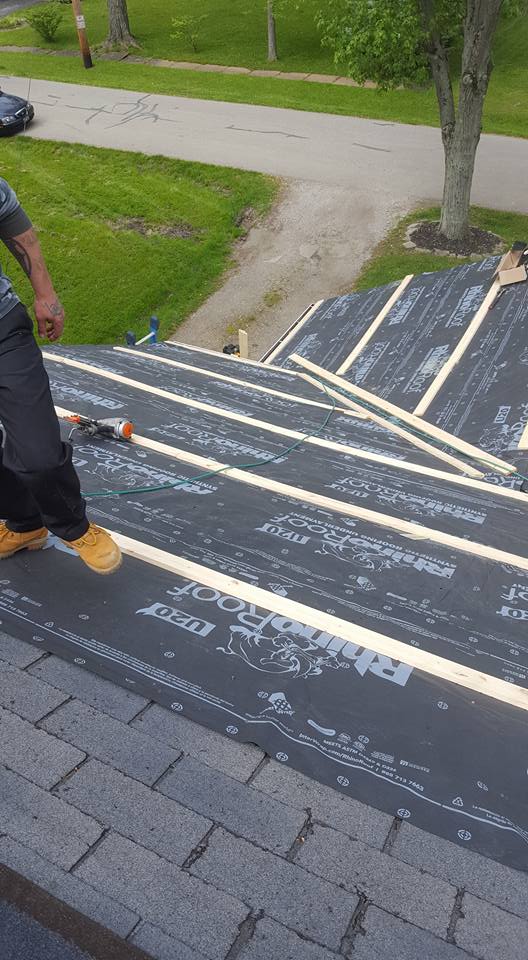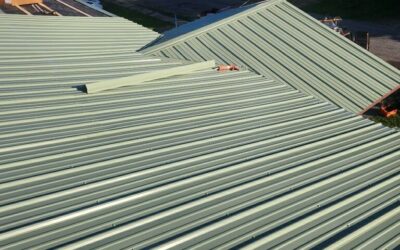What is a Roof Ridge Vent? Understanding its Importance for Your Home’s Roofing System
When it comes to maintaining your home, a solid roofing system plays a crucial role in ensuring both comfort and durability. One often-overlooked but highly important component of a roof system is the roof ridge vent. So, what exactly is a roof ridge vent, and why should you consider installing one? In this blog post, we’ll dive deep into the details of roof ridge vents, their purpose, benefits, types, and how they contribute to the overall health of your home.
What is a Roof Ridge Vent?
A roof ridge vent is a ventilation system installed at the peak or ridge of a roof. It works in conjunction with other ventilation components such as soffit vents and attic fans to provide an effective airflow throughout your attic or roof space. The primary purpose of the ridge vent is to allow hot, humid air to escape from the attic while promoting the inflow of cooler, fresh air from soffit vents located near the eaves of the roof.
Ridge vents are typically designed to run the full length of the roof’s peak, and they are often covered with a protective shingle or metal cap, making them nearly invisible and seamlessly blending with the roof’s aesthetic. Ridge vents are essential for maintaining proper attic ventilation, which helps regulate temperature, humidity, and moisture levels in your home.
Why is Attic Ventilation Important?
Before we delve deeper into roof ridge vents, it’s important to understand the concept of attic ventilation and why it is crucial for your home. The attic is often the hottest and most humid part of a home, especially during summer months when temperatures soar. Without proper ventilation, the attic can trap heat and moisture, leading to a variety of issues:
- Heat Build-up: Excessive heat in the attic can cause the temperature inside your home to rise, leading to higher cooling costs. This is particularly problematic in the summer when the attic can reach temperatures of up to 150°F (65°C).
- Moisture Accumulation: Moisture in the attic can accumulate from sources such as cooking, showers, and even outside humidity. Without proper ventilation, this moisture can condense on roofing materials, leading to mold, mildew, and potential structural damage.
- Ice Dams: In colder climates, inadequate attic ventilation can result in ice dams during the winter. Heat from the attic causes snow on the roof to melt, only for it to refreeze at the eaves, forming ice dams that can damage shingles, gutters, and the roof itself.
- Roof Damage: Without proper airflow, excessive heat and moisture can cause shingles to deteriorate prematurely, leading to costly repairs or replacements.
How Does a Roof Ridge Vent Work?
A roof ridge vent operates on the principle of natural convection. When hot air rises in the attic, it seeks an escape route. The ridge vent provides a path for this hot air to leave the attic. Meanwhile, cooler air is drawn into the attic from the soffit vents or other intake vents located around the perimeter of the roof. This constant flow of air helps to balance the temperature and humidity levels inside the attic, reducing the likelihood of the issues mentioned earlier.
The ridge vent works in harmony with the soffit vents to create a balanced ventilation system. This is often referred to as a “continuous ventilation system” because the air flows freely from one vent to another, allowing for maximum efficiency.
Types of Roof Ridge Vents
There are several different types of roof ridge vents, each designed to meet specific needs and preferences. Understanding the different options available can help you make an informed decision when it comes time to install a ridge vent on your home.
1. Shingle-over Ridge Vent
The most common type of ridge vent, the shingle-over ridge vent is designed to be covered with roofing shingles, making it blend seamlessly with the rest of the roof. It is installed along the peak of the roof and works with the roofing material to provide adequate airflow. These ridge vents are durable, low-profile, and easy to install.
2. Roll Ridge Vent
A roll ridge vent is made from a continuous roll of material, usually metal or plastic, that is installed along the roof’s ridge. It is cut to the desired length and can be a cost-effective option for homeowners looking for a quick and easy ventilation solution. Roll ridge vents are available in both solid and perforated versions, with the perforated versions offering better airflow.
3. Turbine Ridge Vent
Turbine ridge vents use wind power to enhance the airflow in your attic. These vents are equipped with a spinning turbine that helps to pull air out of the attic. While they can be more efficient in areas with higher winds, they are also louder than traditional ridge vents, making them less ideal for quiet neighborhoods.
4. Metal Ridge Vent
Metal ridge vents are a more durable and long-lasting option for homeowners. These vents are made from materials like aluminum or galvanized steel and can withstand harsh weather conditions. Metal ridge vents are typically more expensive than other types but can offer greater protection and longevity.
Benefits of Installing a Roof Ridge Vent
- Improved Airflow
The primary benefit of installing a roof ridge vent is improved airflow throughout your attic. This helps to regulate temperature and moisture levels, creating a healthier environment for your home. Better airflow can also prevent the build-up of heat and humidity, which can lead to mold growth, wood rot, and even pest infestations.
- Energy Efficiency
A well-ventilated attic helps to regulate the temperature inside your home, making it easier to maintain a comfortable indoor environment. During the summer, a ridge vent helps to cool the attic by allowing hot air to escape, reducing the load on your air conditioning system. In the winter, proper attic ventilation helps to prevent ice dams, which can lead to costly roof repairs.
- Prolongs the Life of Your Roof
By allowing heat and moisture to escape from the attic, a ridge vent helps to prevent premature roof deterioration. This can extend the life of your roofing materials, saving you money on repairs and replacements. Additionally, ridge vents reduce the risk of shingle damage caused by trapped heat and humidity.
- Cost-Effective Solution
Ridge vents are a relatively low-cost solution to improve your home’s overall ventilation system. When compared to other forms of ventilation, such as attic fans, ridge vents are more affordable and require less maintenance. The installation cost of a ridge vent is typically recouped in energy savings over time.
- Low Maintenance
Once installed, ridge vents require little to no maintenance. Because they are made from durable materials, they can withstand harsh weather conditions without deteriorating. There’s no need to worry about cleaning or maintaining the vent, making it a hassle-free addition to your home’s roofing system.
- Aesthetic Appeal
Ridge vents are often installed with a low-profile design that blends seamlessly with the rest of the roof. This means that the vent won’t interfere with the aesthetics of your home’s exterior. Shingle-over ridge vents are especially popular for their ability to match the roofing material, creating a clean and uniform look.
How to Install a Roof Ridge Vent
Installing a roof ridge vent requires careful planning and precision. While some homeowners may attempt to install a ridge vent on their own, it is generally recommended to hire a professional roofing contractor to ensure the job is done correctly. Here are the basic steps involved in installing a ridge vent:
- Prepare the Roof: First, the ridge of the roof needs to be exposed, and any existing shingles or roofing materials must be removed.
- Cut the Ridge: A gap is cut along the roof’s peak to make room for the ridge vent.
- Install the Ridge Vent: The ridge vent is placed along the ridge of the roof, and it is secured in place using nails or screws.
- Cover with Shingles: The vent is then covered with shingles to ensure a seamless appearance and prevent water from entering the attic.
Conclusion
A roof ridge vent is an essential part of a well-ventilated roofing system. By allowing hot air to escape and promoting the intake of fresh air, a ridge vent helps to regulate temperature, humidity, and moisture levels in the attic. This, in turn, helps to extend the life of your roof, prevent costly repairs, and improve the overall energy efficiency of your home.
If you’re considering installing a roof ridge vent, it’s important to consult with a professional roofing contractor who can assess your home’s needs and ensure proper installation. With the right ventilation system in place, you can enjoy a more comfortable, healthy, and energy-efficient home for years to come.
This blog provides a comprehensive overview of roof ridge vents, emphasizing their significance and benefits. If you’re in Northeast Ohio and need professional roofing services, feel free to reach out to us at S&K Construction and Remodeling for more information!
 (440) 307-2060
(440) 307-2060



